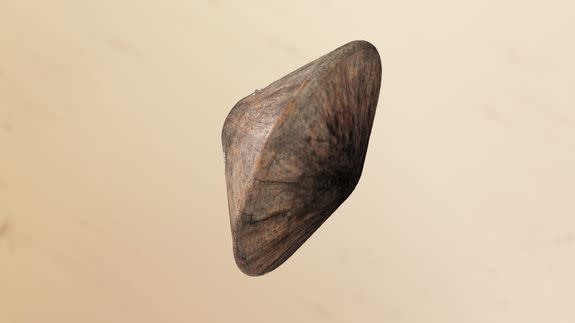Now we know what caused Europe's Mars lander to crash

The European Space Agency (ESA) finally has a better idea of what caused its ill-fated Mars lander to crash-land on the Red Planet in October.
It looks like the Schiaparelli lander — part of the joint alien life-hunting ExoMars mission between the ESA and Russia — crashed into the surface of Mars due to a glitch in its navigation system.
The ins and outs of the issue that doomed that lander are complicated, but basically, as Schiaparelli was coming in for touchdown its navigation computer miscalculated its altitude, leading the onboard computer to think that the lander was already safe and on the ground.
SEE ALSO: Wednesday's Mars landing could put Europe on the Martian map
That miscalculation triggered the jettisoning of the lander's parachute and backshell plus the brief firing of its "braking thrusters."
The lander was still about 3.7 kilometers (2.3 miles) above Mars when this happened. So, while that series of events would have been great if the lander were closer to the surface, it instead led to the lander creating a new crater on the red planet.
“This is still a very preliminary conclusion of our technical investigations,” David Parker, ESA’s director of human spaceflight and robotic exploration, said in a statement. “The full picture will be provided in early 2017 by the future report of an external independent inquiry board, which is now being set up."

Image: NASA
Although the lander didn't make it safely to the Martian surface, engineers working with the mission are still happy with the data collected during the spacecraft's descent.
The Schiaparelli was launched to test technology needed to send a larger payload to Mars at some point in the not-too-distant future.
The ESA and Russia are planning to launch another ExoMars mission — which will include a rover to hunt for signs of life on the Red Planet — four years from now.
"We will have learned much from Schiaparelli that will directly contribute to the second ExoMars mission being developed with our international partners for launch in 2020," Parker said.
While Schiaparelli didn't make it to the planet's surface intact, its companion spacecraft — the Trace Gas Orbiter — is now in orbit around Mars and gathering data about the planet's atmosphere.
The ExoMars missions are designed to hunt for any signs of past or current life on Mars. The thinking goes that if life did exist on the red world, it would have left behind some trace of itself, either in the form of methane or another gas in the atmosphere or some sign on the planet's surface.
